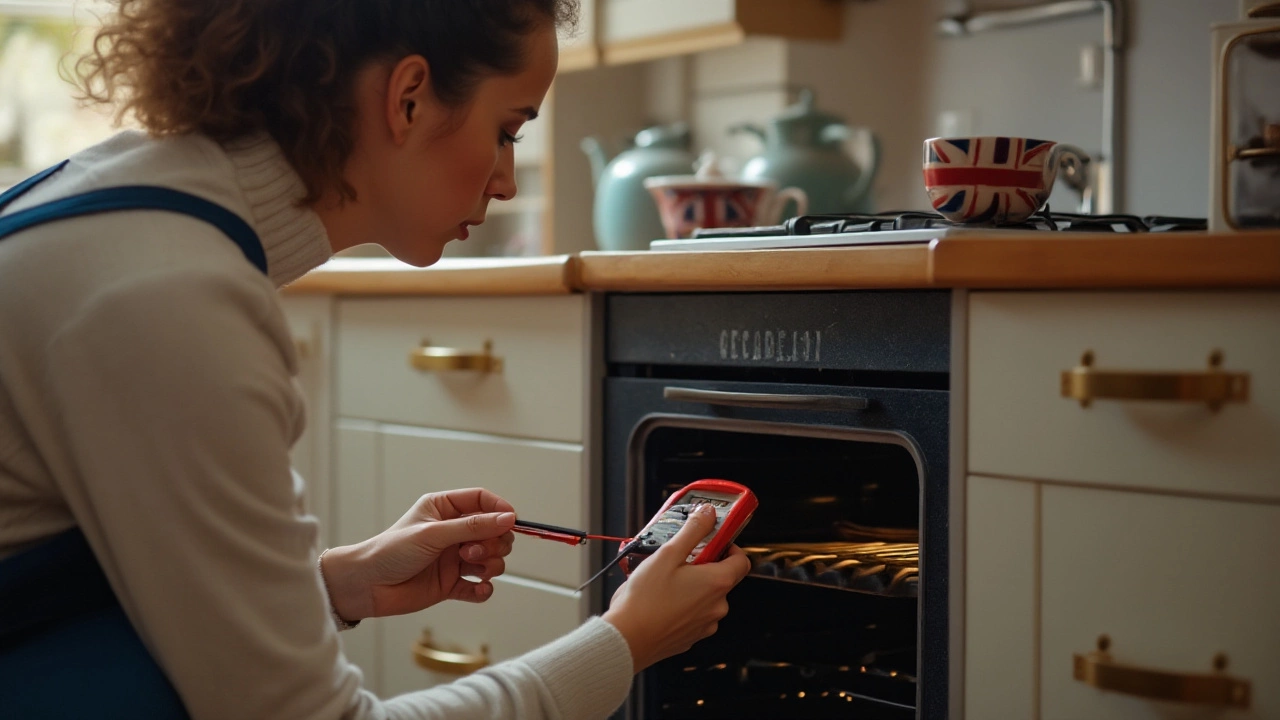Kitchen Appliance Fix – Fast Answers for Everyday Problems
Got a kitchen gadget that’s acting up? You’re not alone. From a noisy oven to a sputtering water heater, most issues have a simple cause and an even simpler fix. In this guide we’ll break down the most common problems, show you quick DIY steps, and tell you when it’s time to call a pro. No jargon, just clear steps you can try right now.
Common Kitchen Appliances and Their Typical Issues
Ovens are the workhorse of any kitchen, but they love to throw error codes when a heating element or thermostat goes bad. If your oven won’t heat, start by checking the element for visible cracks and make sure the power supply is solid. Microwaves often die from a blown fuse or a faulty door latch—both are cheap parts you can replace yourself with a screwdriver.
Extractors and range hoods collect grease quickly. A motor that sounds like a tractor usually means the fan blades are clogged. A quick clean‑out with a mild degreaser and a brush can restore quiet operation. If the motor itself is humming but not turning, it may need a bearing replacement or a full motor swap.
Water heaters aren’t in the kitchen, but many homes have the tank tucked nearby. A heater that constantly resets is often dealing with a failing thermostat or sediment buildup. Flushing the tank and testing the thermostat can extend its life. When the anode rod is depleted, corrosion speeds up—replacing the rod is a cheap way to avoid a full tank replacement.
DIY Fixes and When to Call a Pro
Start every repair by unplugging the appliance or switching off the circuit breaker. Safety first, always. For ovens, replace a faulty element before ordering a whole new unit. For fridges, a noisy compressor usually means a professional diagnosis is needed, but a dirty condenser coil can be cleaned in 15 minutes and often solves cooling issues.
Microwave fuses are inexpensive and swapping them is a matter of minutes. Just be sure the new fuse matches the rating printed on the old one. If your extractor fan motor still won’t spin after cleaning, it may be time to call an electrician—especially if the fan is wired into your home’s main circuit.
When in doubt, compare repair costs to replacement prices. A 15‑year‑old stove might cost more to fix than to replace, while an 8‑year‑old oven often has several years left if you address the right part. Get a written quote, weigh the warranty, and decide based on your budget and how much you love the appliance.
Remember, regular maintenance keeps surprises at bay. Clean oven racks, wipe down microwave interiors, and give your extractor fan a quick brush‑off every month. A little effort now saves you a costly call later.
Got a specific problem that isn’t covered here? Browse our full list of posts for deep dives on water heater lifespan, boiler repair times, fridge compressor signs, and more. We’ve got the details you need to get your kitchen back in action fast.

What to Do If Your Electric Hob Stops Working
Is your electric hob acting up? Before you panic, there are a few easy checks and fixes you can try at home. This guide will walk you through common issues and how to address them, so you might avoid an unnecessary repair bill. From checking the power supply to testing specific hob elements, find out how to get your hob back in action.

Identifying Broken Oven Elements or Thermostats for Effective Repairs
Wondering whether your electric oven’s issue is due to a faulty element or a broken thermostat? This comprehensive guide outlines simple steps to diagnose the problem, helping you figure out if your oven's heating element or its thermostat is malfunctioning. Learn the signs of each problem, the tools you'll need for testing, and useful tips for maintenance. Uncover ways to fix common issues yourself before calling in professional help, saving you time and money.